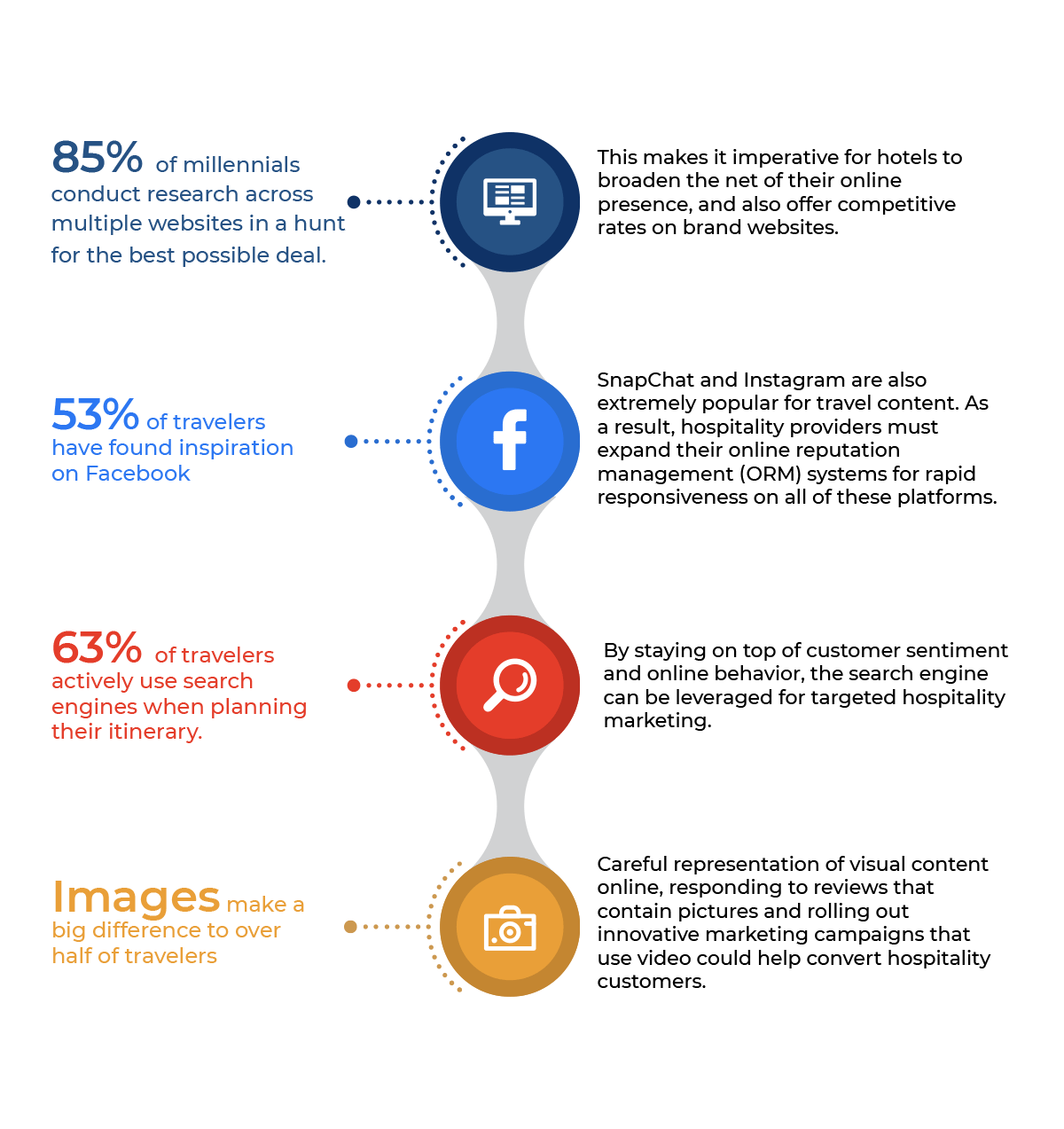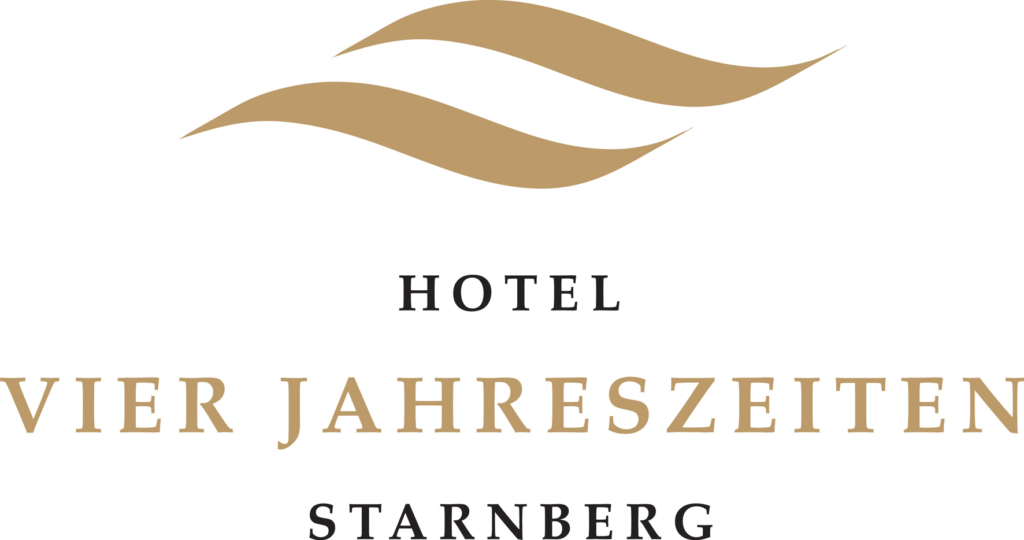The hospitality marketing industry is a curious mix of practices that have proven effective for decades now, and emerging trends that are taking the world by storm. And then you have a highly diverse market demographic, with wildly varying needs across segments. The millennial tourist eager to explore international destinations has little to do with high net worth individuals traveling primarily for work. Inevitably, this makes the job of hospitality marketers extremely difficult!
But if there’s something that’s common to virtually every demographic you look at, it would be the ubiquity of social media, and the demand for personalization. Leisure travelers are increasingly looking at platforms such as Facebook, Snapchat, and Instagram, for inspiration. In the business segment, the search for accommodation and travel options frequently begins online. As a result, any hospitality brand – no matter who they are catering to – must actively work on their social presence.
And if you’re still not convinced, recent reports confirm that digital touchpoints are integral to customer journeys in hospitality, opening up new opportunities for marketers to engage and inform.
Insightful Trends and What They Mean for Hospitality Marketers
There’s more than anecdotal evidence that drives home the relevance of social media in hospitality marketing. Consider the following statistics:

Clearly, brands need to up their hospitality marketing game in order to connect with the new-age traveler. Let’s look at four best practices in this regard.
Lessons in Hospitality Marketing for the Social Media Era
Today, there’s a variety of platforms and digital touchpoints that marketers can use to connect with travelers. Expectedly, social media heads the pack, given its high ROI quality and “always-on” presence. It’s estimated that 3.5 billion people regularly use social media to communicate with friends, family, and their favorite brands. This opens up a massive prospective audience, many of whom are interested in international travel, breaking geographical barriers.
To fully maximize this trend and deliver the online experiences that the modern traveler deserves, I’d recommend the following best practices:
- Hang out where your customers are – This is a great rule of thumb for marketers in any industry, and the same applies to hospitality as well. As per a survey by Adweek, 52% of Facebook users dream about a vacation when on the platform, even when they aren’t planning a trip in the near future while 87% use the platform for travel inspiration. Brands can no longer limit their online presence to demand-side partners in a bid to earn more traffic. With social media usage on the rise, there is an immense untapped opportunity for organic content – apart from paid digital ads. The right social media strategy, combining organic updates and targeted posts is definitely the way forward.
- Leverage new formats – Be it rise of Gen Z or changes in the digital content consumption patterns of consumers, the content formats & their usage is ever evolving hence, it is imperative for the marketers to test and make best use of them. Google’s new ad formats ‘gallery ads’ launched in August 2019 & ‘discovery ads’ launched in May 2019 are not only immersive but engaging too. Facebook recently launched ‘search ads’ in October, 2019 permits advertisers to bid to have their Page show up in relevant mobile searches users make on the platform. Likewise Instagram too, launched – ‘Reels’ in November this year that will enable users to create short videos which can be shared and remixed – just like TikTok.
- Talk, listen, and respond – This ties into the first best practice – social media conversations are a two-way street. Hospitality marketing strategies must aim to encourage online conversations, and brands must proactively respond to customer queries/feedback. In fact, ORM intervention at the right time can go a long way in protecting brand reputation and loyalty. For example, RateGain’s social media marketing tool helps hotels monitor social chatter 24/7, in addition to customized calendars to guide the narrative.
- Know thy guest – Did you know that two out of three customers would like their travel companies to offer personalized communication. This implies that brands lagging behind on the personalization factor will lose out to more customer-focused hospitality brands. Social media is an excellent source to collect and analyze customer data. At RateGain, we create a unique profile whenever a customer interacts with a hotel’s social media handle. These profiles make up custom audiences for targeted campaigns.
- Try again, after you succeed – Hospitality marketing isn’t a set-and-forget process. Hotels often make the mistake of publishing great content but then forgetting to update websites and digital assets for months on end. Similarly, it is vital to keep tweaking and reinventing marketing campaigns based on seasonal, topical, and demographic opportunities. That’s why we are always focused on business and competitor intelligence as an integral part of hospitality marketing.
A Final Takeaway for Hospitality Marketers
Remember, hospitality marketing is all about increasing a brand’s reach on the one hand and maximizing each guest’s lifetime value on the other. Step 1 and 4 are geared for the former, helping to acquire fresh customers in a rapidly evolving market. Step 2 and 3 are for strengthening relationships with existing customers, boosting their lifetime value. And hotels could even leverage cutting-edge technologies such as the Guest Experience Cloud Platform to turn customer delight into sustained value. This, we believe, will be critical as customers ask for more, and hospitality service providers are compelled to deliver.
 Deutsch
Deutsch Português
Português Italiano
Italiano Espanol
Espanol čeština
čeština ไทย
ไทย Français
Français

